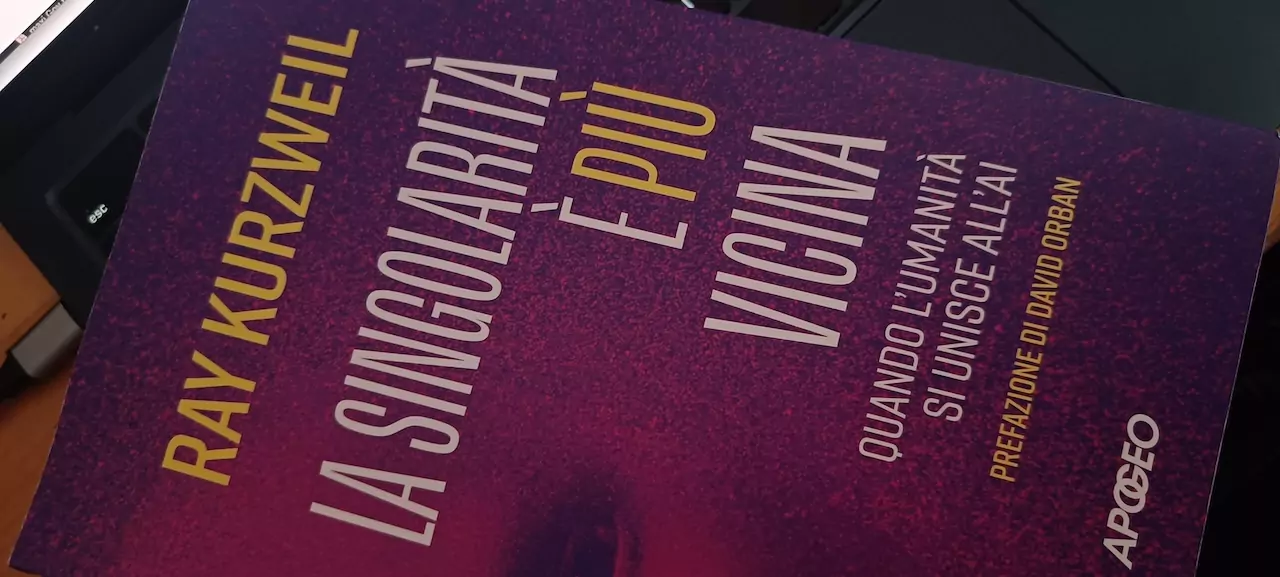‘The Singularity is Closer’, is the updated version of the book written in 2005 that was titled ‘The Singularity is Closer’. The author is Ray Kurzweil who coined the concept of the technological singularity and in this book shows what has been done so far and what opportunities and developments we can expect in the years between now and around 2030-2035.
According to Kurzweil, over the next decade we will see the development of fundamental technological evolutions both in the area of computational capacity and in any other area: energy, industry, logistics, health, longevity. This is because the author emphasises the fact that technological evolution evolves at an exponential rate, so what will happen in the next 10 years will have a much greater impact than what has happened in the last 10, which have already been significant, and it is for this reason that the book required updating. This acceleration is largely due to what he refers to as ‘accelerated returns’, i.e. the ability of technologies to unlock new features and capabilities that in turn become elements that accelerate evolution itself. At the centre of this framework Kurzweil puts artificial intelligence, which is the pivot and clear example of how technological evolution feeds itself and thus accelerates; the subtitle of the book is ‘when humanity joins AI’. The reference is to information technology, which is the area in which evolution manifests itself in the most exemplary way, but information technology has spill-over effects on all other areas: greater computational capacity makes it possible to simulate biological structures and obtain cures more quickly, see the example of AlphaFold for the calculation of how proteins fold, which led to the assignment of the Nobel Prize in Chemistry to Sir Demis Hassabis greater computational capacity will accelerate the development of frontier technologies also for energy such as the new generation solar and nuclear fusion but also distributed manufacturing through additive manufacturing, smart logistics, vertical agriculture that uses a fraction of soil and water compared to traditional agriculture.
Kurzweil, however, does not limit himself to an analysis of technologies but delves into their social, economic, and environmental impact and in the flow of pages shows how and why the world today is a better place than in the past and how and why new technologies and their evolution will make it even better. The book offers a positive message, it looks to the future with optimism even if, with wisdom, the author does not shy away from analysing what could be the problems and critical issues, he analyses them and explains how it will be possible to prevent them from becoming a brake on development. Kurzweil is also aware that the general perception is that the world is in a bad way: there are wars, work is threatened by new technologies, immigration and climate change are increasingly evident, and there are still too large pockets of poverty in the world. In short, to any one of us if we think of the overall scenario it appears to be an unhappy situation, but the reality is quite different, especially if we examine it with an evolutionary eye. Over the years, over the decades, everything has improved, albeit with differences between various parts of the world, but it is a general improvement: individual wealth has improved, individual diets have improved, access to healthcare has improved, the average life span has lengthened, people work fewer hours, the quality of the environment in which we live has improved.
Without, of course, closing his eyes to the problems and critical issues, many of which it is precisely technological evolution that will help us solve, Kurzweil looks to the future, to the connection between the biological and digital mind, to the possibility of backing up every living being, to the resolution of structural problems such as fossil fuel pollution, to the more equitable distribution of resources and opportunities, to a less impactful economic model, and even to considerations more related to ethics and philosophy.
The book is published in Italy by Apogeo (394 pages, 25 euros) and is introduced by David Orban who knows Kurzweil from Singularity University and who, note for the reader, was the co-founder, together with the writer, of Startupbusiness in 2008 when the project saw the light of day.
ALL RIGHTS RESERVED ©
